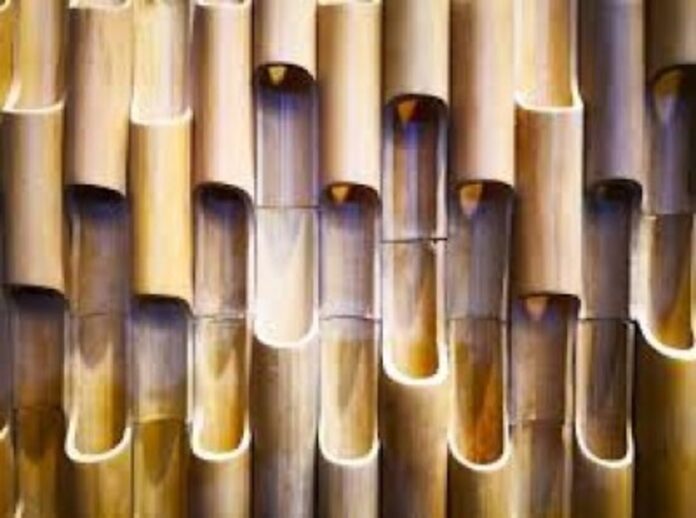The forthcoming inauguration of the new Parliament building in Delhi highlights the extensive use of bamboo materials from Tripura in its construction. According to the Tripura forest department, carpet mats made from bamboo supplied by Matha Industries in Bodhjungnagar have been utilized in the flooring of the Parliament. This collaboration between states underscores the nationwide effort in constructing this iconic structure. Additionally, various other materials from different regions across the country have been incorporated, such as carpet installations from Mirzapur, stone carving from Rajasthan, teak wood from Nagpur, and furniture from Mumbai. The new Parliament building, significantly larger than its predecessor, features a triangular design and an increased seating capacity for both the Lok Sabha and Rajya Sabha.
Bamboo Materials for the Parliament Floor Tripura’s abundant bamboo resources have played a crucial role in the construction of the new Parliament building. The state’s forest department reports that bamboo-made carpet mats, provided by Matha Industries in Bodhjungnagar, have been utilized for the flooring. This utilization of bamboo highlights the sustainable and eco-friendly nature of the material, showcasing Tripura’s contribution to the project and its commitment to environmentally conscious practices.
The construction of the new Parliament building has brought together materials from various states, symbolizing unity and cooperation on a national level. Carpet installations for the building have been sourced from Mirzapur, Uttar Pradesh, showcasing the artistic talent of the region. Stone carving work has been carried out in Rajasthan, known for its intricate craftsmanship. The teak wood used in the building has been procured from Nagpur, Maharashtra, while red and white sandstone has been brought from Saramthura, Rajasthan. The furniture for the Parliament has been crafted in Mumbai, highlighting the craftsmanship of the city.
The new Parliament building surpasses its predecessor in both size and design. Covering an area of 64,500 square meters, the new structure is approximately three times larger than the old building. While the old Parliament building featured a circular design, the new building boasts a striking triangular shape. This modern and innovative design showcases India’s commitment to progress and represents a departure from traditional architectural norms.
The new Parliament building accommodates a significantly larger number of representatives in both the Lok Sabha and Rajya Sabha. The Lok Sabha chamber, inspired by the national bird, the peacock, has been designed to accommodate 888 members, an increase from the previous 543 seats. Similarly, the Rajya Sabha room has been designed in the pattern of the national flower, the lotus, with an expanded seating capacity of 384, compared to the previous 250 seats. These symbolic designs reflect the essence of Indian national identity within the parliamentary space.
The construction of the new Parliament building in Delhi showcases the collaborative efforts of various states in India. Tripura’s bamboo materials contribute to the building’s flooring, representing the state’s commitment to sustainability. The use of materials from different regions across the country, including carpet installations, stone carvings, teak wood, and furniture, emphasizes the unity and diversity of India’s craftsmanship. With its enhanced size, unique design, and increased seating capacity, the new Parliament building symbolizes India’s progress and commitment to democracy. This architectural marvel stands as a testament to the nation’s rich heritage and serves as a representation of its aspirations for a brighter future.




